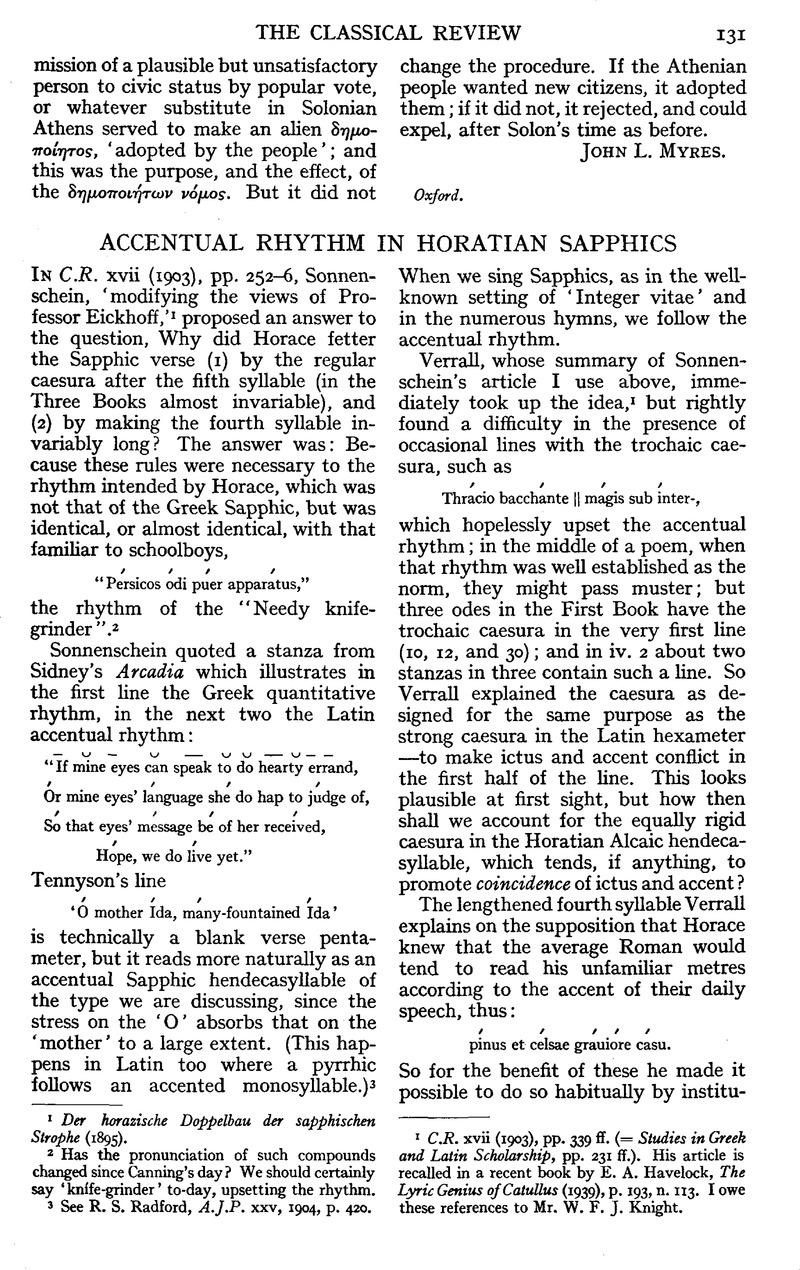No CrossRef data available.
Published online by Cambridge University Press: 27 October 2009

page 132 note 1 Der horazische Doppelbau der sapphischen Strophe (1895).
page 132 note 2 Has the pronunciation of such compounds changed since Canning's day? We should certainly say ‘knife-grinder’ to-day, upsetting the rhythm.
page 132 note 3 See Radford, R. S., A.J.P. xxv, 1904, p. 420.Google Scholar
page 132 note 1 C.R. xvii (1903), pp. 339 ff. (= Studies in Greek and Latin Scholarship, pp. 231 ff.).Google ScholarHis article is recalled in a recent book by Havelock, E. A., The Lyric Genius of Catullus (1939), p. 193, n. 113. I owe these references to Mr. W. F. J. Knight.Google Scholar
page 132 note 1 Die lyrischen Verse des Horaz: Ber. d. Sachs. Ges., Bd. 70, Heft 4.
page 132 note 1 Heinze, loc. cit., pp. 65–71.
page 132 note 2 See Broadhead, H. D., Latin Prose Rhythm (1922), p. 55.Google Scholar
page 133 note 1 This type, with a monosyllable after the caesura, is very rare; the monosyllable is almost always a proclitic (et 14 times, per, quod). Heinze, p. 267.
page 133 note 1 It is unlikely that the Odes were generally intended for singing. See Heinze, , Votn Geist des Rōmertums, pp. 204 ff.Google Scholar